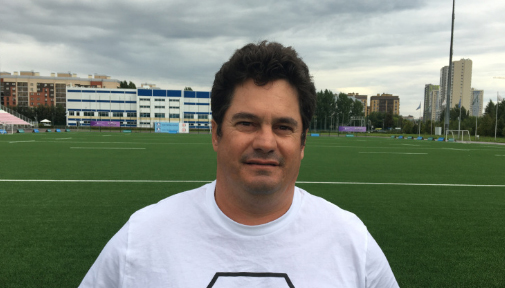A former
Springbok assistant coach and a coach involved with the
FNB Shimlas when they lifted the 2015 Varsity Cup will be steering the ship at the University of the Free State (UFS) over the next few years.
The UFS has appointed two renowned coaches – both alumni – in
Swys de Bruin and
André Tredoux as the new Director of Coaching and Head Coach of the Shimlas, respectively.
The duo will start in November 2021, with De Bruin at the helm for two years and Tredoux for three years. De Bruin, a former Springbok attack coach and a current SuperSport analyst, will be in charge of the UFS coaching structures, working alongside Tredoux at the Shimlas.
Tredoux returns to the UFS after being the head coach of the Nelson Mandela University for the
Varsity Cup. He takes over from Pote Human. Human had a one-year contract with the Shimlas and has been appointed head coach of the Houston SaberCats in America.
More new faces
Another new addition to the coaching team is
Tiaan Liebenberg. The former Bok was an assistant coach at the Central University of Technology in the 2021 Varsity Cup.
Hendro Scholtz and Rashied Isaacs will stay part of the UFS coaching team.
Liebenberg, Scholtz, and Isaacs all played for the Shimlas.
Jaco Swanepoel, Head of Rugby at KovsieSport, says the UFS is excited about what lies ahead.
Wealth of experience
De Bruin has an extensive coaching CV and has been involved with teams such as Griquas, the Sharks, and the Lions. He was an assistant coach and head coach at the Lions, winning the Currie Cup and being Super Rugby finalists in 2016, 2017, and 2018.
“It is a great privilege to get the services of someone like Swys,” Swanepoel said.
“The other coaches and the players will benefit a lot from working with him.”
Tredoux has coached at Slava Moscow in Russia, at the NTT Docomo Red Hurricanes in Japan, at Paarl Boys High, and was the U19 Head Coach and Head of Recruitment at the Cheetahs.

André Tredoux returns to the University of the Free State, where he has coached
before, to take up the role as new Head Coach of the Shimlas.(Photo: Supplied)
At the UFS, he was the Shimla performance analyst in 2015, assistant coach of the UFS Young Guns who won the 2014 Varsity Cup, and head coach of the 2015 Young Guns that came second in the tournament.
“André has walked the road with us before and has since gained experience in Japan and Russia,” Swanepoel said.
“His recruitment knowledge also speaks volumes. He was the recruiter in 2014 and 2015 when the Young Guns and the Shimlas won the Varsity Cup, respectively.
“It is great to have him back.”
The new Shimla coaching staff:
Swys de Bruin (Director of Coaching), André Tredoux (Head Coach), Hendro Scholtz, Tiaan Liebenberg, Rashied Isaacs (all assistant coaches), Mark Nicholls (Conditioning coach), Edith Maritz (Physiotherapist).